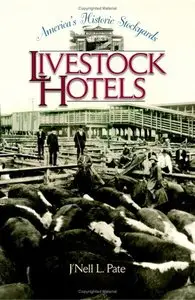America's Historic Stockyards: Livestock Hotels
Publisher: Texas Christian University Press | 2005 | ISBN: 0875653049 | 226 pages | PDF | 5 MB
Publisher: Texas Christian University Press | 2005 | ISBN: 0875653049 | 226 pages | PDF | 5 MB
Livestock markets for the sale and distribution of meat developed as early as the days of colonial America. In the mid-nineteenth century, as westward expansion increased and railroads developed, stockyard companies formed in order to meet the demand of a growing nation. Contrary to markets, these companies were centrally organized and managed by a select few principal partners. America’s Historic Stockyards: Livestock Hotels is an examination of such stockyards, from their early beginnings to their eventual decline.
Stockyards helped to establish some of America’s greatest cities. Early on the scene were stockyards in cities such as Cincinnati, otherwise known as “Porkopolis,” and meat stockyards and packing powerhouse Chicago, which was considered the number one livestock market in the nation. Markets soon opened in the Midwest and eventually expanded further westward to California and Oregon.
Other smaller markets made large contributions to the industry. The cow towns of Fort Worth and Wichita never reached the status of Chicago but did have large livestock receipts. Fort Worth, for instance, became the largest horse and mule market in 1915, as World War I produced an increased demand for these animals.
Meatpacking moguls known as the Big Four—Phillip Armour, Gustavus Swift, Nelson Morris, and Edward Cudahy—usually financed these growing markets, controlled the meatpacking business and, in turn, the stockyards companies. Although the members changed, this oligopoly remained intact for much of the duration of the stockyards industry. However, as railways gave way to highways, the markets declined and so too did these moguls. By the end of the twentieth century, almost every major market closed, bringing an end to the stockyard era.



